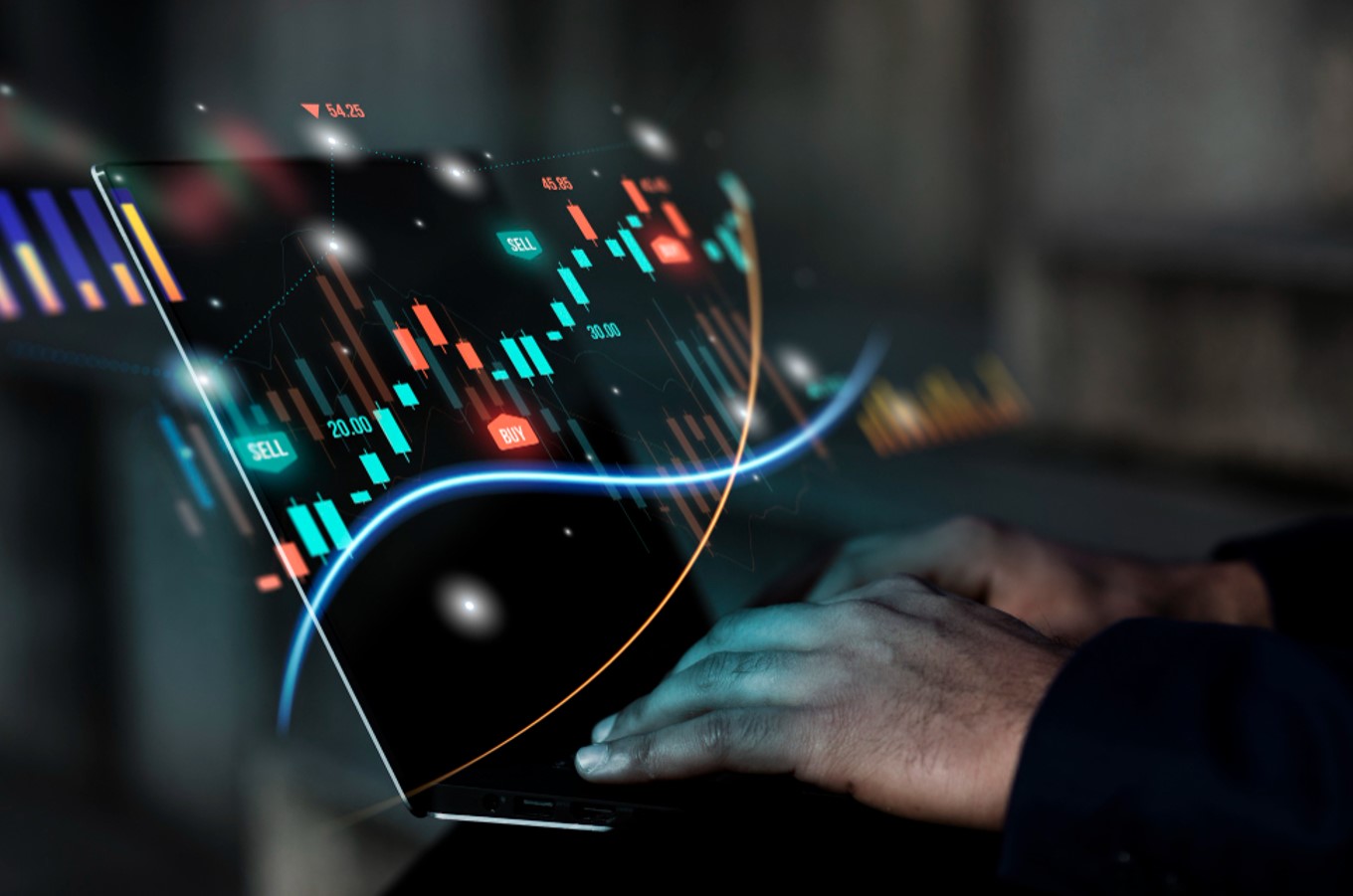Optimizing Trades: How Trading Bots Enhance Market Efficiency

In the ever-evolving world of financial markets, efficiency is key. The ability to buy and sell assets swiftly and accurately can make all the difference between profit and loss. Enter trading bots, the digital assistants of the trading world. In this article, we’ll delve into the fascinating realm of trading bots and explore how they optimize trades, ultimately enhancing market efficiency.
Understanding Trading Bots
What are Trading Bots?
Trading bots, short for trading robots, are software programs designed to automate the process of buying and selling financial assets in the markets. These bots are programmed with predefined algorithms and trading strategies, allowing them to execute trades on behalf of traders without human intervention.
Trading bots come in various forms, from simple scripts that execute basic trading orders to sophisticated AI-powered systems capable of analyzing vast amounts of data and making complex trading decisions. They are a testament to the fusion of technology and finance, revolutionizing the way we trade.
The Evolution of Trading Bots
Trading bots have come a long way since their inception. Initially, they were basic tools used for simple tasks like executing orders. However, as technology advanced, so did the capabilities of these bots. Today, they have evolved into complex systems that can handle real-time data analysis, adapt to changing market conditions, and execute intricate trading strategies.
The evolution of trading bots can be attributed to several factors. First, the exponential growth of data available in financial markets has made it increasingly challenging for human traders to process and act upon. Trading bots, with their ability to swiftly analyze and interpret data, fill this gap effectively.
Additionally, advances in machine learning and artificial intelligence have empowered trading bots to learn from historical market data, identify patterns, and make predictions. This level of sophistication was once unimaginable and has significantly contributed to their effectiveness.
The Benefits of Using Trading Bots
1. Speed and Efficiency
One of the primary advantages of trading bots is their speed. Unlike humans, bots can execute trades in a matter of milliseconds, capitalizing on even the smallest market movements. This speed translates into improved efficiency as trades are executed with minimal delay.
Consider a scenario where a stock suddenly surges in value due to breaking news. Human traders might struggle to react quickly enough to buy at the lowest price, but a trading bot can execute orders within microseconds, ensuring that traders seize the opportunity before it’s gone.
2. Eliminating Emotional Bias
Human traders are often influenced by emotions like fear and greed, leading to impulsive decisions. Trading bots, on the other hand, operate based on pre-defined algorithms, eliminating emotional bias and ensuring consistent execution of trading strategies.
Emotional trading can be detrimental, causing traders to deviate from their strategies and make irrational decisions. Trading bots, devoid of emotions, stick to the plan, increasing the likelihood of long-term success.
3. 24/7 Availability
Markets operate around the clock, and human traders need rest. Trading bots, however, can monitor and execute trades 24/7, taking advantage of opportunities in different time zones.
This constant vigilance is particularly valuable in the world of cryptocurrencies, where markets never sleep. A trading bot can execute trades in the middle of the night, ensuring that traders don’t miss out on lucrative opportunities simply because they are asleep or unavailable.
4. Risk Management
Trading bots can implement risk management strategies automatically. They can set stop-loss orders, diversify portfolios, and adhere to risk-reward ratios, helping traders minimize losses and protect their investments.
Risk management is a critical aspect of successful trading. Trading bots excel in this regard, as they can execute predefined risk-mitigation measures without hesitation, reducing the chances of significant financial setbacks.
How Trading Bots Work
1. Data Analysis
Trading bots collect and analyze vast amounts of market data, including price movements, trading volumes, and news feeds. This data helps them make informed trading decisions.
2. Algorithm Execution
Once the bot has analyzed the data and identified a trading opportunity, it executes the predefined algorithm. This algorithm can be as simple as buying low and selling high or as complex as utilizing machine learning models to predict market trends.
3. Real-time Monitoring
Trading bots continuously monitor market conditions, adapting their strategies as needed. They can enter or exit positions swiftly to maximize profits or limit losses.
Risks and Challenges
| Common Challenges for Trading Bots | Description |
| Technical Issues | Trading bots can face technical glitches, software errors, connectivity problems, server failures, and data feed issues. |
| Market Volatility | During extreme market volatility, trading bots may struggle to keep up with rapid price swings, lack current data, face increased risk, and may be vulnerable to flash crashes. |
| Over-Optimization | Over-optimization can lead to curve fitting, lack of algorithm robustness, failure to generalize to different market conditions, and discrepancies between backtesting and live trading. |
Technical Issues
Trading bots, like any software, are susceptible to technical issues and software errors. These issues can range from minor glitches to more severe malfunctions, and if not addressed promptly, they can result in significant financial losses for traders. Here’s a closer look at some common technical issues trading bots may encounter:
a. Connectivity Problems: Trading bots rely on internet connections to execute trades. If there are disruptions in internet connectivity, it can lead to delays or failed trade executions.
b. Software Bugs: Even well-designed trading bot software can have bugs. These bugs can cause the bot to behave unexpectedly or make incorrect trading decisions.
c. Server Failures: If the server hosting the trading bot experiences downtime or crashes, it can disrupt the bot’s operation and prevent it from executing trades.
d. Data Feeds Issues: Accurate and timely data is essential for trading. If the data feeds used by the bot are delayed or inaccurate, it can lead to incorrect trading decisions.
e. Integration Problems: Some trading bots integrate with multiple exchanges and platforms. Integration issues can occur when these exchanges or platforms update their APIs or change their functionalities.
To mitigate the risks associated with technical issues, traders should closely monitor their trading bots, have backup plans in case of failures, and ensure that their bots are regularly updated to address any software vulnerabilities.
Market Volatility
While trading bots are highly efficient in handling normal market conditions, they can encounter challenges during periods of extreme volatility or unexpected market events. It’s crucial for traders to be aware of these limitations and implement safeguards to protect their investments. Here’s a deeper look at how market volatility can affect trading bots:
a. Rapid Price Swings: During volatile market conditions, asset prices can fluctuate rapidly. Trading bots may struggle to keep up with these sudden price movements, leading to suboptimal trade executions.
b. Lack of Historical Data: Some trading bots rely on historical data to make predictions and decisions. In highly volatile markets, historical data may not accurately reflect current conditions, causing the bot to make inaccurate decisions.
c. Increased Risk: Volatile markets often carry higher risks. Trading bots may not always effectively manage these risks, potentially leading to larger-than-expected losses.
d. Flash Crashes: In extreme cases, flash crashes can occur, causing assets to plummet in value within seconds. Trading bots may not react swiftly enough to prevent losses during such events.
To address the challenges posed by market volatility, traders should consider setting stricter risk management parameters, monitoring market news and events closely, and having contingency plans in place to pause or modify bot operations during extreme market conditions.
Over-Optimization
Over-optimization of trading bot algorithms is a common pitfall that traders should be cautious about. While optimizing algorithms based on historical data is essential, over-optimization can lead to poor performance in real-time markets. Here’s a detailed explanation of this issue:
a. Curve Fitting: Over-optimization often involves curve fitting, where the bot’s algorithm is excessively fine-tuned to historical data. This can make the algorithm overly complex and tailored to past conditions.
b. Lack of Robustness: Over-optimized algorithms may not be robust enough to adapt to changing market dynamics. They may perform exceptionally well in the historical dataset they were optimized for but struggle in real-world, dynamic market conditions.
c. Failure to Generalize: An over-optimized bot may struggle when faced with market scenarios that differ from those seen in the historical data. This can result in unexpected losses.
d. Backtesting vs. Live Trading: Algorithms that perform exceptionally well in backtesting may underperform when deployed in live trading due to over-optimization.
To avoid over-optimization, traders should strike a balance between optimizing their bots for historical data and ensuring that the algorithms remain adaptable and robust in real-time markets. Regularly updating and refining the algorithm based on current market conditions can help prevent this pitfall.
Trading bots have revolutionized the way we trade in financial markets. Their ability to operate swiftly, without emotional bias, and around the clock has made them invaluable tools for traders seeking to enhance market efficiency. However, it’s essential to use them wisely, understanding their limitations and risks.
FAQs
1. Are trading bots suitable for beginners?
Trading bots can be used by beginners, but it’s essential to have a good understanding of how they work and the risks involved.
2. Do I need extensive programming knowledge to use trading bots?
While some programming knowledge can be helpful, many trading bot platforms offer user-friendly interfaces that don’t require advanced coding skills.
3. Can trading bots guarantee profits?
No, trading bots cannot guarantee profits. They can help optimize trading strategies, but market risks always exist.
4. How do I choose the right trading bot for my needs?
Selecting the right trading bot depends on your trading goals, risk tolerance, and the assets you want to trade. Research and testing are crucial.
5. Is it possible to build my trading bot?
Yes, it’s possible to build your trading bot if you have the necessary programming skills. Many online resources and communities can help you get started.
